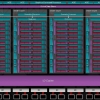Carrizo To Deliver The Largest Performance per Watt Leap Ever, Coming in The Second Quarter of 2015
-
Featured Topics
-
Topics
-
0
-
Splatacake ·
Posted in Peripherals1 -
2
-
6
-
0
-
MiszS ·
Posted in Operating Systems0 -
vortexx21 ·
Posted in CPUs, Motherboards, and Memory3 -
7
-
Elite Knight ·
Posted in CPUs, Motherboards, and Memory13 -
Juan Sulthon ·
Posted in Troubleshooting0
-
-
play_circle_filled

Latest From Linus Tech Tips:
iPhones Are Undeleting Nudes?? - WAN Show May 17, 2024
-
play_circle_filled

Latest From Tech Quickie:
Ethernet Is Named After Something Really Dumb (and other tech stories)
















Create an account or sign in to comment
You need to be a member in order to leave a comment
Create an account
Sign up for a new account in our community. It's easy!
Register a new accountSign in
Already have an account? Sign in here.
Sign In Now